A Momentum-Based Mathematical Tool To Assess Your Blindspots
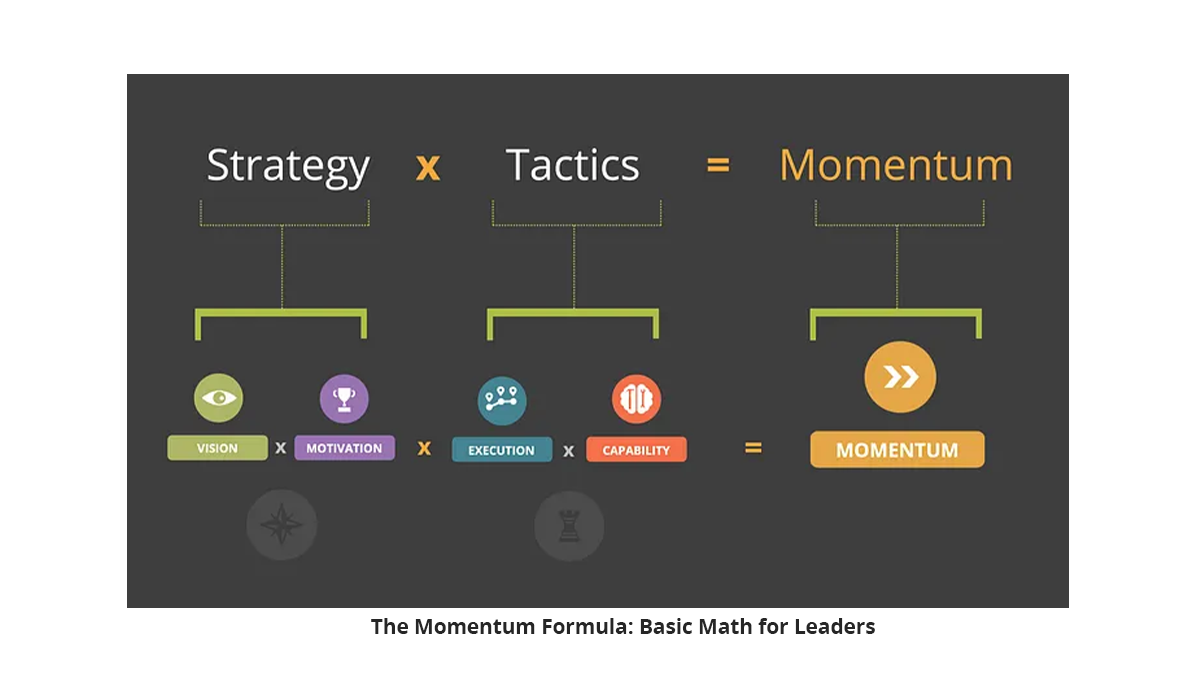
The best teams, who perform with precision, purpose, and efficiency emanate vitality and optimism. These teams universally have great clarity of vision, intrinsic motivation, confidence in the competence of their team, and the proficiency that comes from their ability to execute well together. I call this combination of four leadership levers (vision, motivation, execution, and capabilities), The Momentum Framework. It is represented by a bounded four-quadrant model that represents an organization’s inputs, outputs on the horizontal, and its strategy and tactics on the vertical. When a team is firing on all four of these cylinders, pulling on all four of these levers, it manifests in clarity, creativity, adaptability, and proficiency (represented in the diagram by the orange arrows).
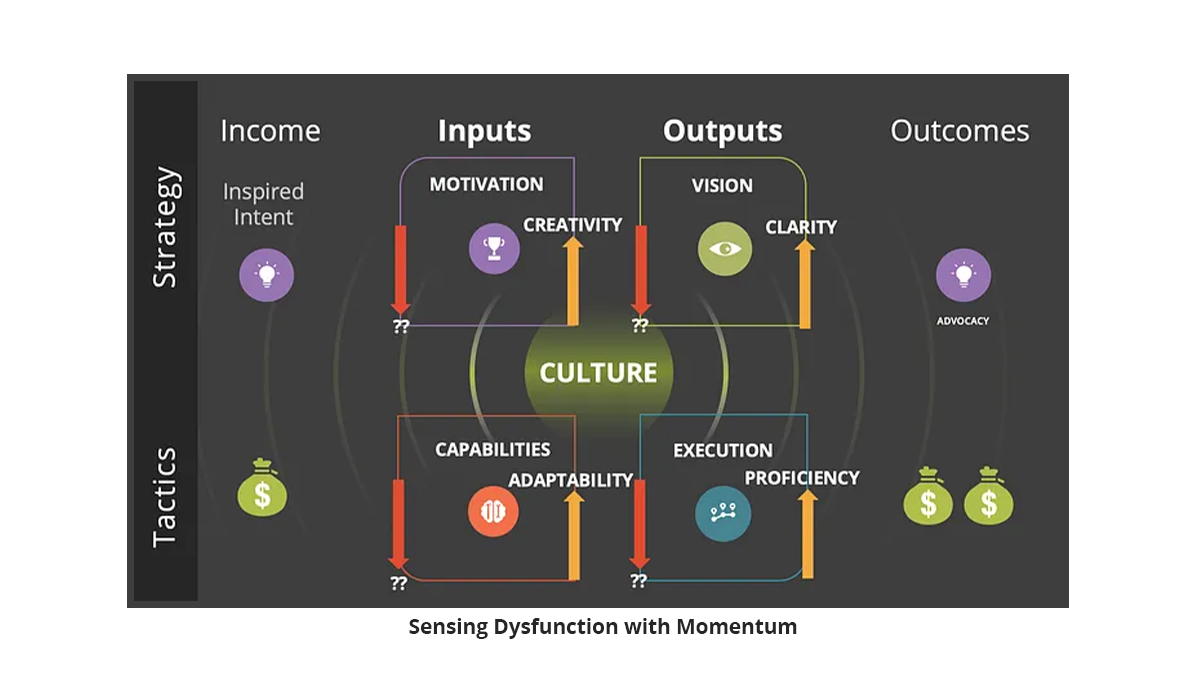
Most teams eventually falter.
The infinite game of leadership involves the toil of figuring out which lever to pull on more purposefully to maximize momentum.
There is a finite set of things that lead to team failure. They fall into one of the four quadrants, identified above. The ability to diagnose signs of potential failure or drag early on can change the fate of a team and improve its outcomes dramatically. Later we will walk through what sources of friction teams experience when each of the four quadrants is deficient. But first, let’s walk through the math.
The formula for organizational momentum, in its most basic form goes back to the 4th or 5th century, BC and comes from The Art of War by Sun Tzu.
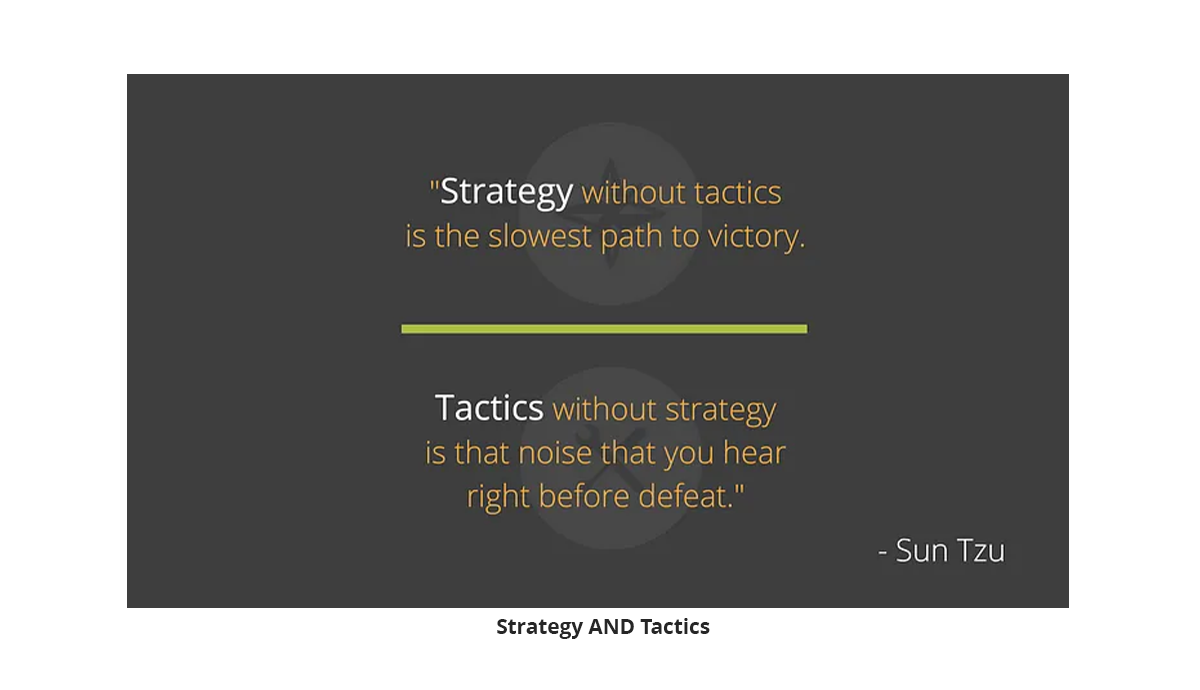
While I cannot find evidence of that quote in the writing, the book is crafted into two distinct sections, one on strategy and one on tactics. We can faithfully reproduce this with a simple equation using multiplication. If either component is zero, it will lead to zero momentum. If we increase either, it has a multiplicative effect on the other and increases momentum. It looks like this:
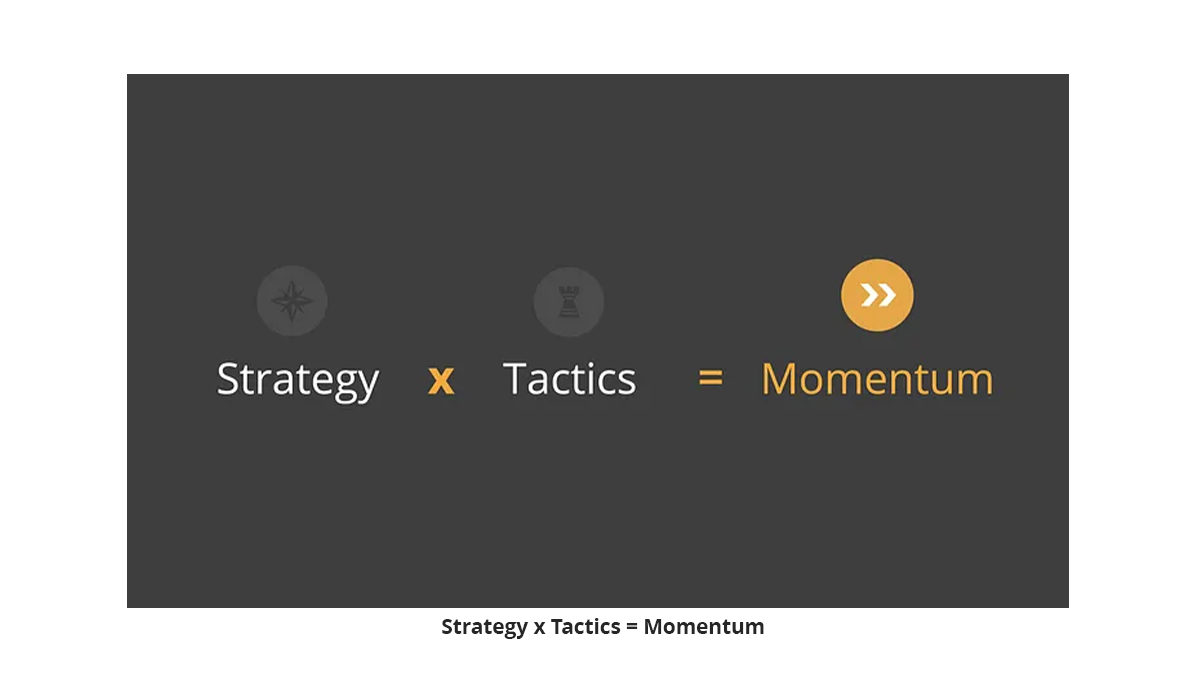
Now let’s break each term (Strategy x Tactics) into its component parts starting with the distinction of Strategy.
Strategy.
An organization’s strategy involves the combination of having a clearly articulated vision that unlocks human potential and having a highly motivated team that is signed up to achieve that vision. Sun Tzu talked about this in the Art of War.
If you don’t have a clear articulation of what future you are trying to create, how far can you get? If your team is not signed up to get after that vision, where are you going?
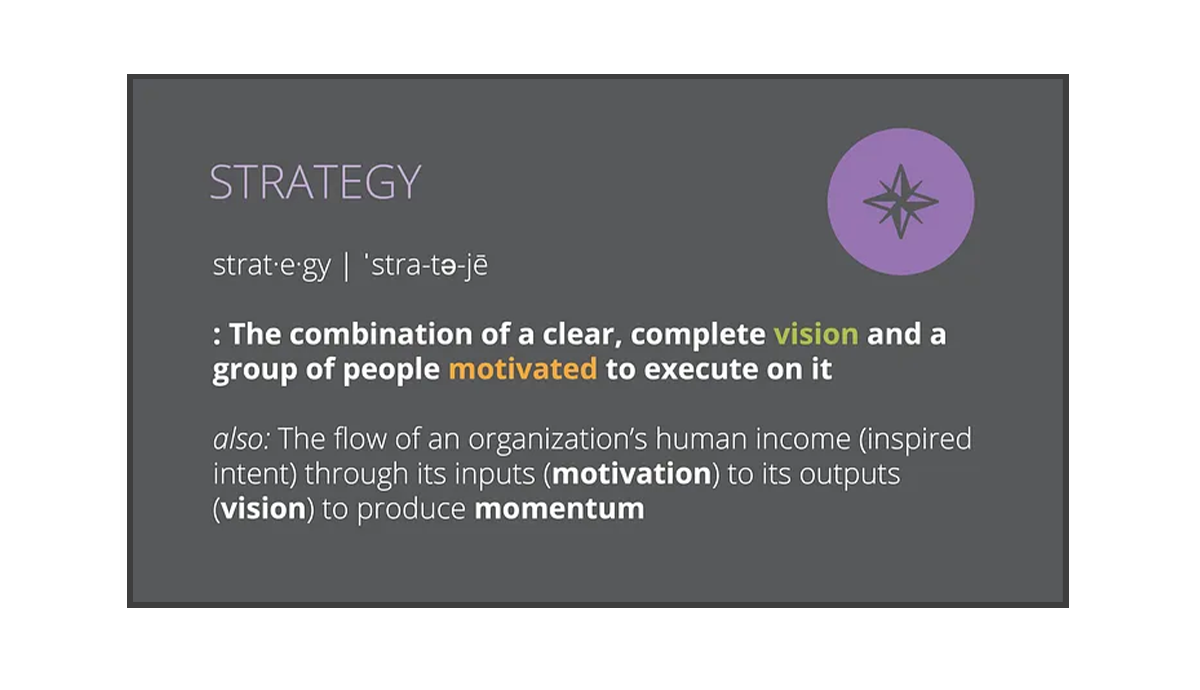
Tactics.
An organization’s tactics are represented by the combination of the capabilities that an organization has and its ability to deploy those resources to execute effectively.
How far can a team go without the right skills, tools, resources, and knowledge? Alternatively, how far will it go if it can’t use those skills to effectively prioritize, and create throughput that results in a return on investment?
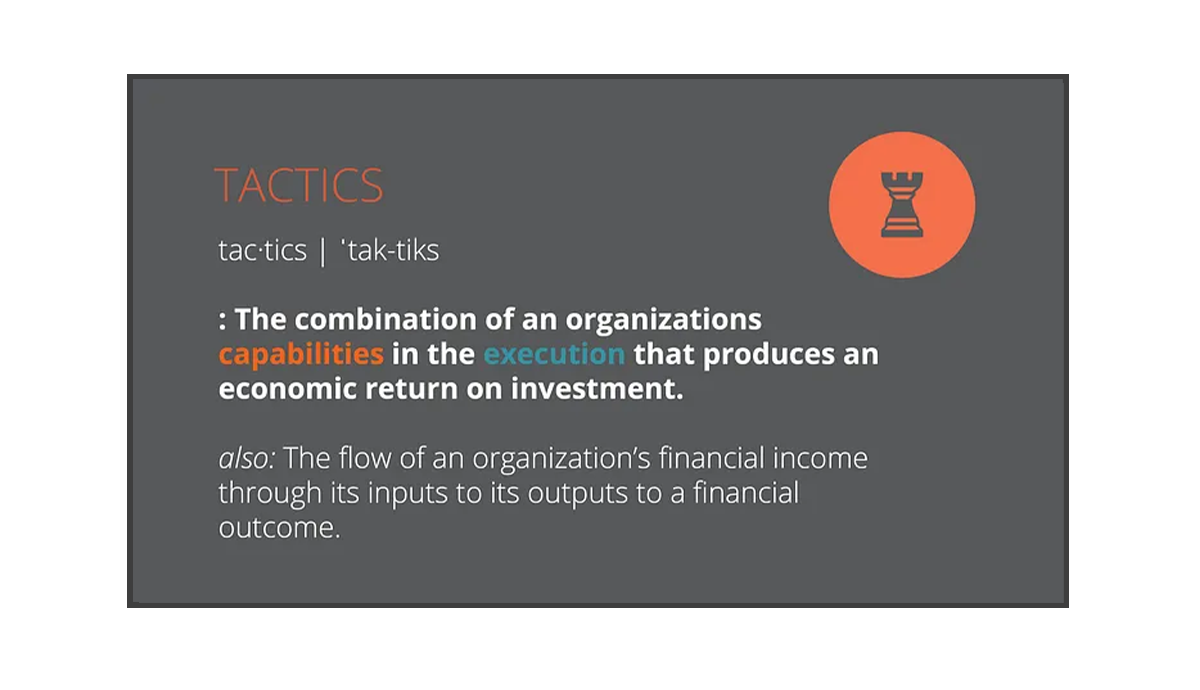
Putting it all together, the formula looks like this:
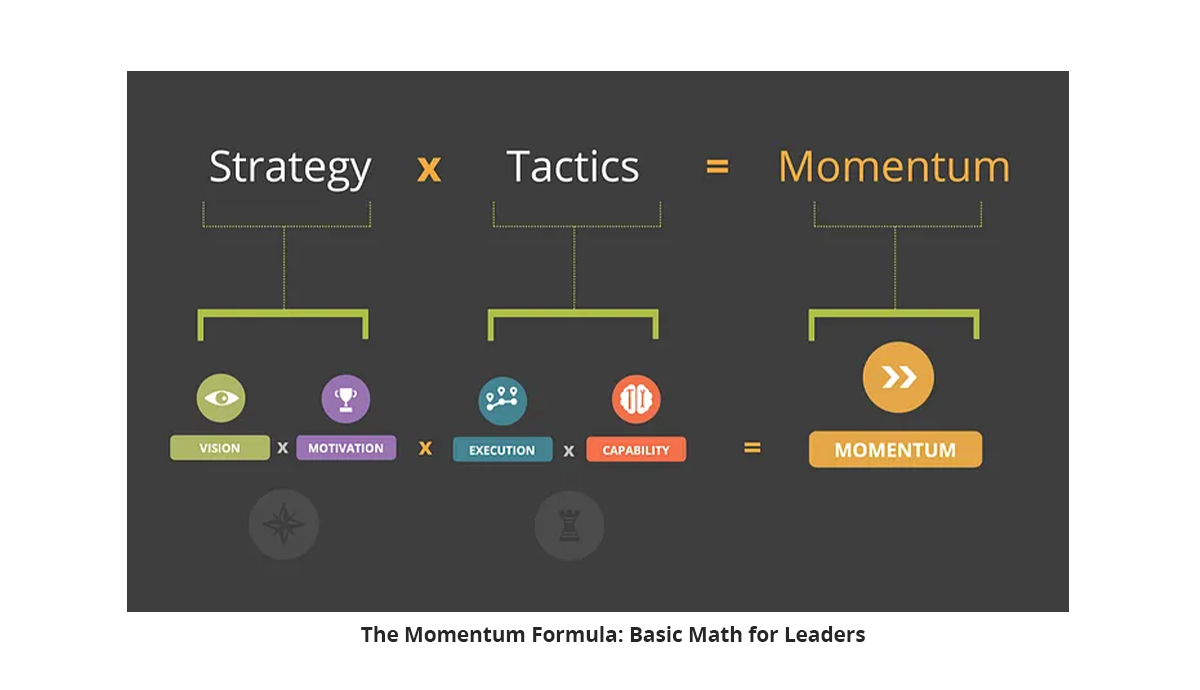
Friction.
If any of the four components = zero, you would get zero momentum. Improving any of the four improves the momentum that results. When you see this math, it might give you the sinking sensation that, as a leader, this is an infinite game. When you improve any of the components, the momentum of the system rises, but only if you don’t have reductions in any of the other three. Thus, you need a way in which to monitor for symptoms in each of the four categories. Ideally, you could create a way to monitor for symptoms of vitality and improvement as well as symptoms of atrophy and dysfunction. When any of the four components are in a state of dysfunction, friction emerges and works against the team’s momentum. We want to monitor for the sources of friction and work to minimize or eliminate them.
Vision.
When the vision is strong, it manifests as clarity. The team has a clear understanding of who is being served, what problems are being solved, and how the team will know they are successful. A strong vision serves to unlock human potential. It paints a picture for the team of what the future will look like for the people that you serve. A strong vision provides the basis for the next part of the equation and leads to intrinsic, high-quality motivation.
However, even if a team is motivated, has strong capabilities, and knows how to prioritize their work with a roadmap for execution, they may experience confusion. When we lack clarity in our vision, it is difficult to remain aligned for long. Teams lose confidence in leadership and find themselves confused about their work. People will have a hard time tapping into their creativity if they don’t have clarity around whom they are serving and what problems they are solving. Markets change, consumer preferences change, pandemics happen that change the way your customers interact with your firm. A vision should not be so fixed that you feel as though you don’t have to monitor its health. There are many sources of friction that lead to confusion.
As a leader, monitor for confusion and work to maximize clarity.
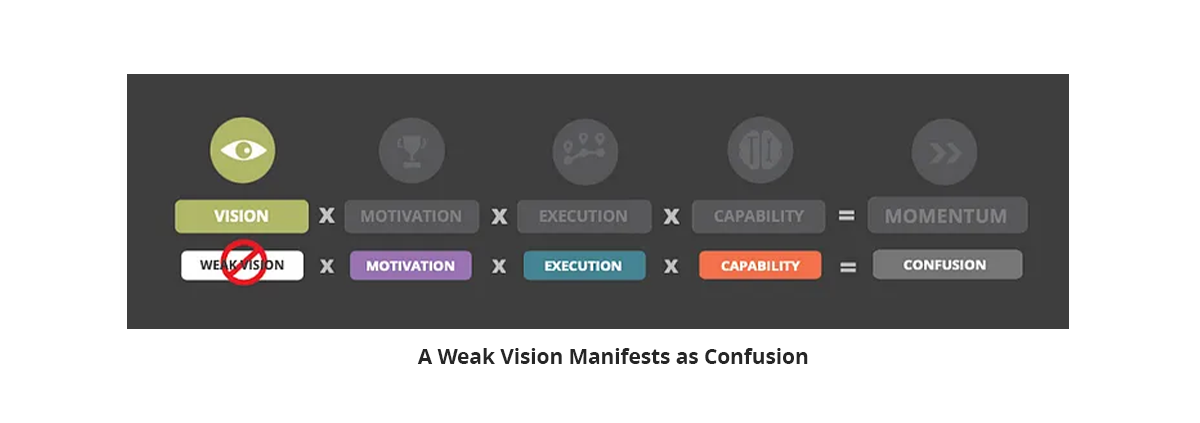
Motivation.
When a team has high-quality, intrinsic motivation, it manifests in alignment, confidence, and commitment. A clear vision that a team assembles together, is a cause for alignment, a source for confidence, and an inspiration for commitment. If you find that your team is not motivated by the current vision, you have to ask yourself two questions:
- Do you have the wrong butts in the wrong seats? Not everyone is going to be as motivated by your vision as you. That’s OK. But if you have even one bad apple in the bunch, who is not aligned with the vision, you have much work to do. You may have to shuffle people around, but make sure that you have people on your bus who are motivated by the vision.
- Is the vision clear enough? I have seen many leaders who were unsuccessful because they were not able to articulate their vision in a way that was motivating to their team. Stop what you are doing, if this is the case, and get your team in a room to articulate your vision together. Make sure it is a worthwhile vision and that the team is aligned on it.
When everyone is aligned, decisions flow faster, conversations improve, and organizational collaboration is palpable. When everyone is confident in the vision and in each other, trust goes up and business gets done. When everyone is committed to the vision and to each other, they become a force to be reckoned with and creativity is abundant.
Even if the team has a clear vision, a healthy roadmap for execution, and the necessary skills, tools, and knowledge, they may experience apathy. Over long periods of time, this friction may manifest as burnout. People will have ups and downs in terms of their levels of motivation, but if you are not monitoring for it, it can fall off fast and have a terrible impact on morale.
As a leader, monitor for apathy and work to maximize the space for creativity.
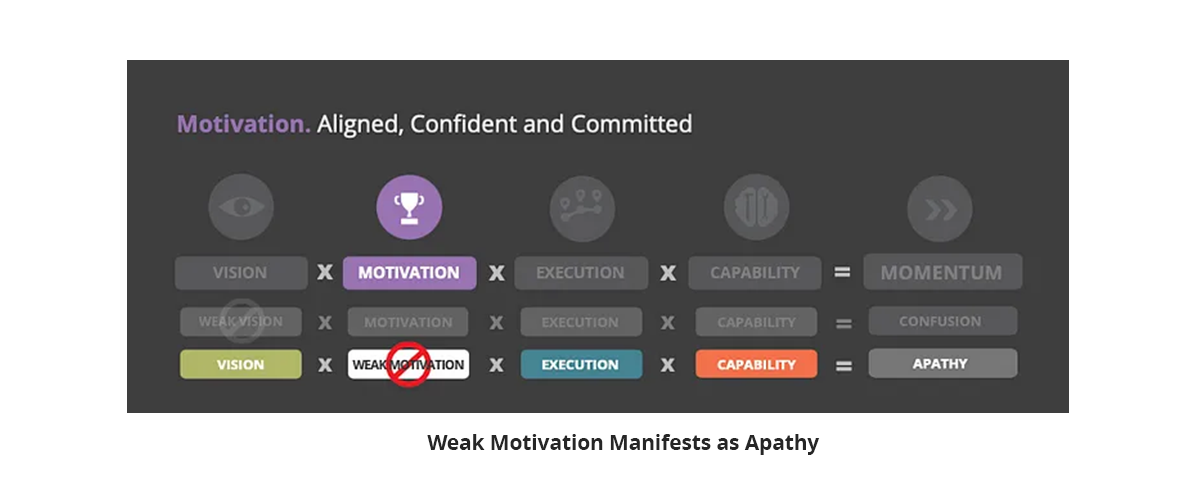
Execution.
With a strong vision and a healthy amount of intrinsic motivation, we have a “One Team-One Dream” situation. You have a collection of people aligned, confident, and committed to a vision for making the world a better place through your organization’s products or services. This is incredibly powerful for a leader because the team does not need to be micro-managed. They can be trusted to make decisions at the ground level where they are most important and the team is equipped to handle them. It is very difficult, if not impossible, for leaders to create systems that allow people to objectively prioritize most things in the wild. Thus, setting up a clear vision and making sure the team is intrinsically motivated by that vision will empower great execution.
Teams that are executing well demonstrate proficiency that manifests as a great experience. A great experience, not only for customers but also for the team when they are in flow together. Over time, teams that optimize their execution also find ways to improve throughput, create stronger roadmaps, improve predictability, and reduce costs.
Even if the team has a clear vision, is highly motivated, and has the skills, tools, and knowledge to succeed, they may still experience waste. Teams that execute deficiently experience waste that manifests as a low-quality experience for customers and team members. Sometimes, it results in a lack of throughput for the organization. Team members will be scrambling to clean up messes and dealing with inefficiencies. These are the frictions that reduce their ability to be in flow in their work.
As a leader, monitor for waste and work to maximize the time teams spend in flow.
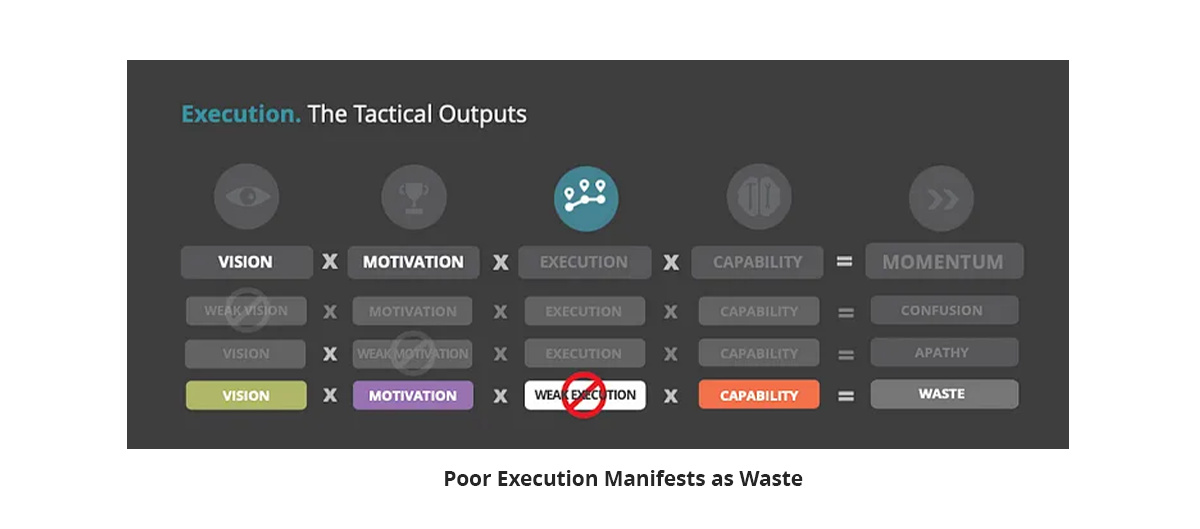
Capabilities.
When your teams are operating in “One-Team-One-Dream” mode and they have a clear roadmap for execution and their capabilities are strong, they are set up for success. Leaders cannot sit on their current competence levels for long, however, as markets change, customer needs change, and most importantly, people get bored when they are not learning. Leaders keep a healthy focus on maximizing capabilities and hold their teams accountable to an ongoing standard for learning. They set themselves up to adapt to the environmental changes that are inevitable. Adaptability comes from preparedness and training. Ask the Navy SEALS.
Teams that have strong capabilities are growing continuously by improving their knowledge, skills, and access to resources at the individual, team, and organizational levels. They are intrinsically motivated to go learn the next most important skills that will be required to achieve the vision. In the best cases, they will learn them before they need them.
Even if the team is in “One Team-One Dream” mode and they can see the yellow brick road through their robust and executable roadmap, they will become frustrated in leadership without the right butts in the right seats. Without the proper skills, knowledge (or access to knowledge), your team will lack the competence to accomplish at a rate that will keep them satisfied. Without the proper tools to complete a task, the team will become anxious and lose confidence. The lack of ability and/or resources simply creates friction that leads to frustration on a team.
Monitor for Frustration and work to maximize the ongoing growth of your team and your teammates.
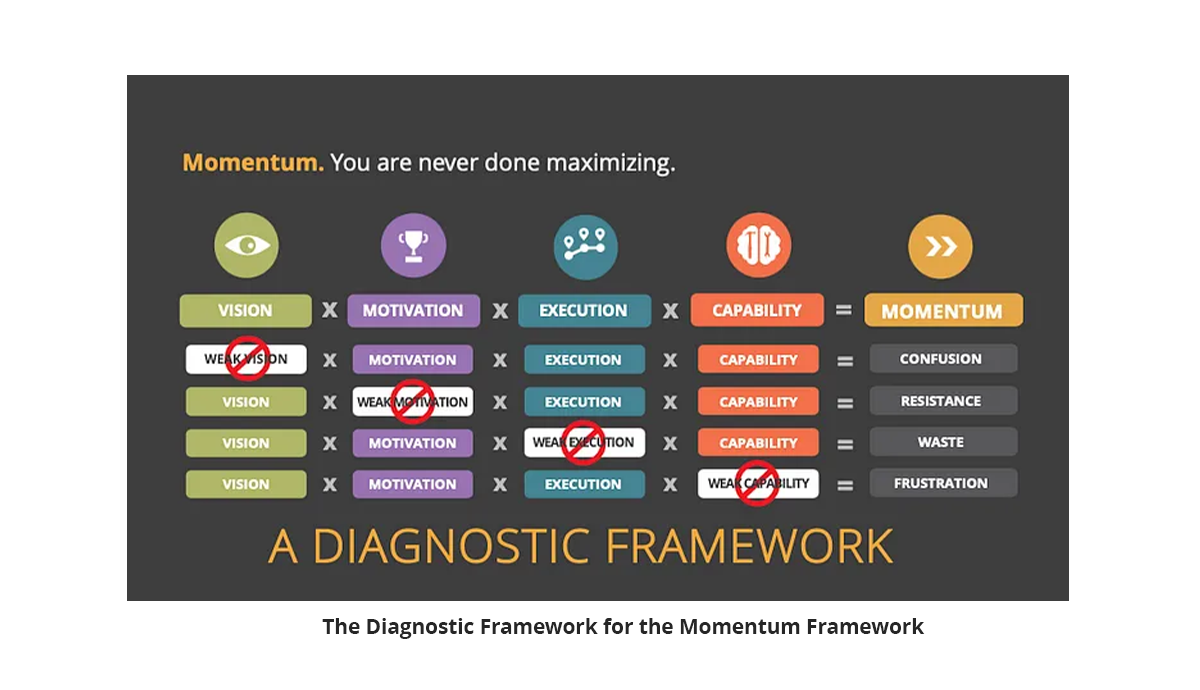
Maximization.
Few teams have ever fully maximized their potential for momentum. Working to maximize each of the components in the momentum framework is the infinite game of leadership. It’s like a game of “Whack-a-Mole” in that you are never done, and one of the four quadrants is always in the most need of your attention.
After working for three decades with hundreds of teams and many CEO’s, military, and government leaders, I have seen all kinds of permutations of friction slowing down team progress. Without a framework like this, leaders are constantly whacking at whatever problems seem most urgent today. It pays to look at your ecosystem through the lens of a framework so that you can organize your thoughts and apply your precious attention and intellect in a meaningful and thoughtful manner. Teach your teams to do the same.
If you like this, please clap, share widely and most importantly, give me some love through your feedback. It is the only way I get to keep learning and growing.
Resources and References
Great Leadership, Strategy, and Tactics, by Sean Flaherty (2021).
The Art of War, by Sun Tzu (4th or 5th Century BC).
Great Visions Unlock Human Potential, by Sean Flaherty (2019).
An Advocacy Strategy is Nutrition for Your Culture, by Sean Flaherty (2021).
The Leadership Flip, by Sean Flaherty (2020).
How, When, and Why Bad Apples Spoil the Barrel, by William Felps (2016).
Objective Prioritization is Impossible, by Sean Flaherty (2020).
Optimize for Team Flow, by Sean Flaherty (2021).
What Navy SEALS can teach us about adaptability, by Brent Gleeson (2019).
Is Your Strategy a Word Salad, by Sean Flaherty (2021)
The multiplication diagram is visually based on the “The Knoster Model,” T Knoster, Presentation to TASH Conference, Washington DC, 1991.

Sean Flaherty is Executive Vice President of Innovation at ITX, where he leads a passionate group of product specialists and technologists to solve complex client challenges. Developer of The Momentum Framework, Sean is also a prolific writer and award-winning speaker discussing the subjects of empathy, innovation, and leadership.



